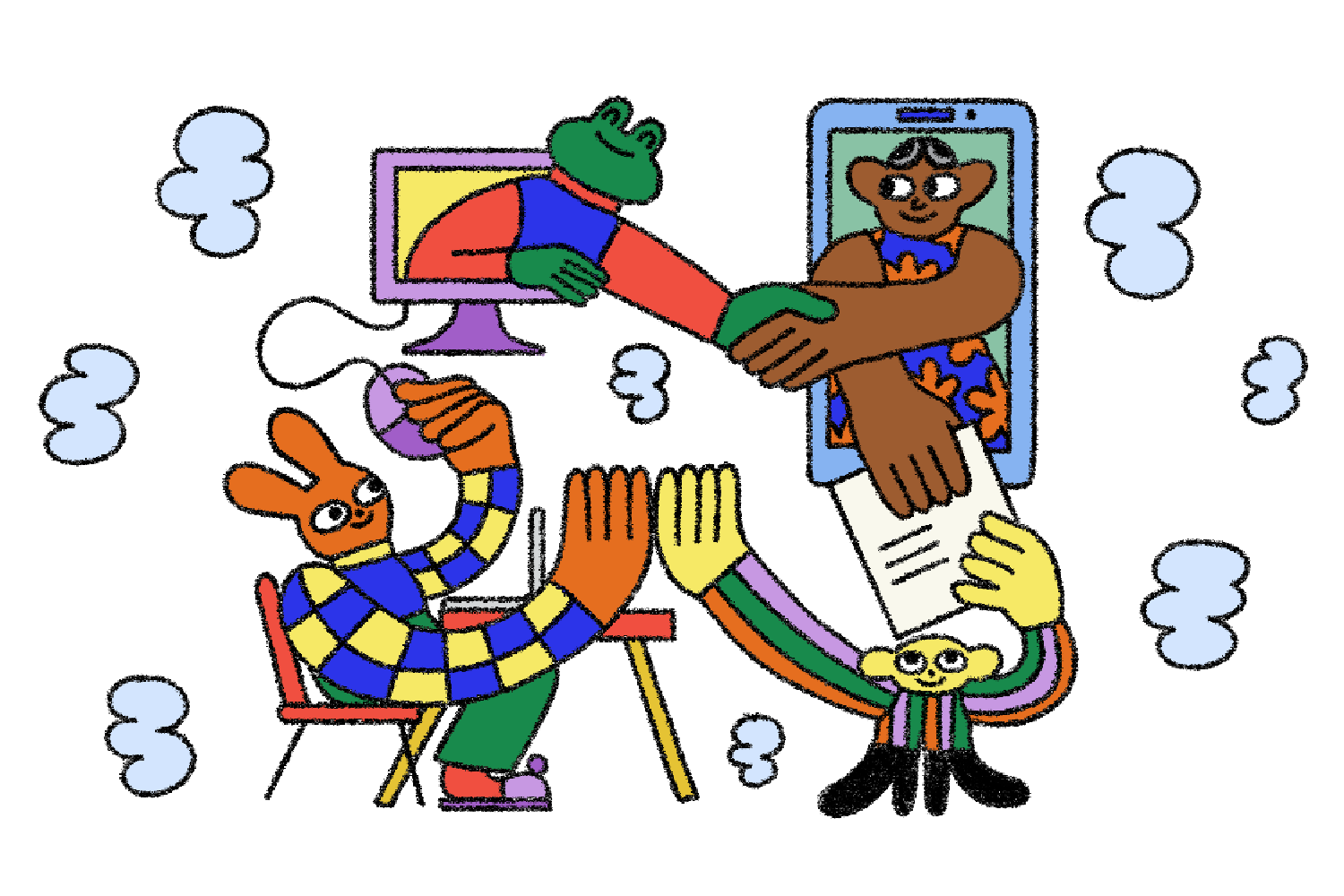Is It Time for Workplaces to Ditch Annual Performance Reviews? This CEO Thinks So

Spencer Saunders, president and CEO of Art & Science, will be the first to tell you that performance reviews at his firm often used to be “dreadful for everybody involved.” Before the Toronto-based digital agency started overhauling its process in 2021, it used the traditional annual model, where employees sat down with managers to talk about how the year went, and would be rated on a standardized rubric ranging from “needs improvement” to “exceeds expectations.” If all went well, an employee might get a raise or bonus. “It was a monolithic event,” says Saunders. It was time consuming and stressful for employees, he says, and raised the possibility of recency bias, where your most recent work stands in for an entire year’s performance, good or bad.
Around the same time, in 2021, the agency was growing, and Saunders was debating whether to hire a human resources team, which they agency currently didn’t have. This led him to Amanda Hudson, founder of Toronto-based HR consultancy A Modern Way To Work. Saunders hired Hudson as a consultant and they began working together on a holistic overhaul of how Art & Science approaches people management. Along with revamping compensation packages and investing in manager training, re-imagining performance reviews became a priority.
Related: Would You Tell Your Boss How You Really Feel About Work? That’s the Point of ‘Stay Interviews’
Hudson started meeting with Art & Science’s senior leadership team to understand what was (and wasn’t) working for them, and what they wanted out of the new review process. Themes emerged when it came to what was needed: fairness across teams so everyone has the same opportunities; a consistent approach that solved for biases like favouritism; and a collaborative process that better involved both managers and their reports.
They landed on a “360 approach” to performance management, built around regular one-on-one meetings, which range from weekly to monthly depending on the team, with a meaningful structure and goal. “You can have the small talk, but it’s more about ‘What can I help you with?’ and ‘Where do I need you to improve?’” explains Saunders. To facilitate this, they began using the software Lattice, which helps schedule those chats, and then documents the discussion.
The other advantage of this software, says Saunders, is the way it enables “continuous feedback,” rather than a once-a-year thought dump. This is encouraged not just from manager-to-employee, but employee-to-manager, and also employee-to-employee. “We’re not naming and shaming, but it’s a tool to facilitate some of this communication,” says Saunders. “It also means we’ve got a record.” This level of documentation has meant that managers have a deeper grasp of what’s been going on with an employee over an extended period, and can better support them. “The employee can also ask for feedback through the system,” adds Hudson.
Related: How to Improve Your Company’s Glassdoor Rating
Conversely, if a manager wants to get rid of someone for poor performance, senior leadership’s first port-of-call is this record. They’ll look to see if the manager and report have been meeting regularly, and if there’s been a documented conversation about the issue, or if there’s other feedback from colleagues that echo the concern.
Alongside this continuous feedback model, the Art & Science team wanted to ensure there was still a set occasion where things like promotions or raises can be formally discussed (although those conversations can happen at any point under the new system). Enter “milestone meetings,” which are often tied to an employee’s work anniversary. “What I love about milestone meetings is that both the employee and the manager are presented with a set of questions, so there’s an aspect of reflection,” says Saunders. These questions are specific, and the majority are strengths-focused: When were you most engaged this year? What are you most proud of? What situations have been the most stressful? These questions can point out areas of alignment—employee and manager might both agree that the employee is great with clients, for example. “If an employee is over performing, or ready for that next career step, their manager can go to Spencer and say, ‘Here’s all the feedback, all the one-on-ones to prove it. Let’s give them a promotion,’” Hudson says.
Related: Does Your Boss Make You Feel Valued? Employee Recognition Programs Can Fix That
Saunders’s work philosophy is that performance doesn’t always need to be rewarded with a title change or promotion. After all, some people don’t want to be managers. “The value someone may be delivering is absolutely worth some kind of remuneration that should be performance-based, and still be equitable, because we can point to exactly how they’ve been crushing it or exceeding expectations,” he says. “A manager might step back and say, ‘Maybe this employee needs to be rewarded with a one-time bonus.’”
Because Art & Science’s process is innately about elevating employees’ success, Saunders says that it has naturally led to things like higher engagement and greater job satisfaction. The agency has also lowered voluntary employee turnover by about 50 per cent between 2021 and 2022. Now, in exit interviews, Saunders isn’t making “frustrating discoveries” anymore, like someone saying they hadn’t spoken to their manager in six months. “Even when people leave the firm, they will thank us for the time and effort in how they were managed while they were here.”










